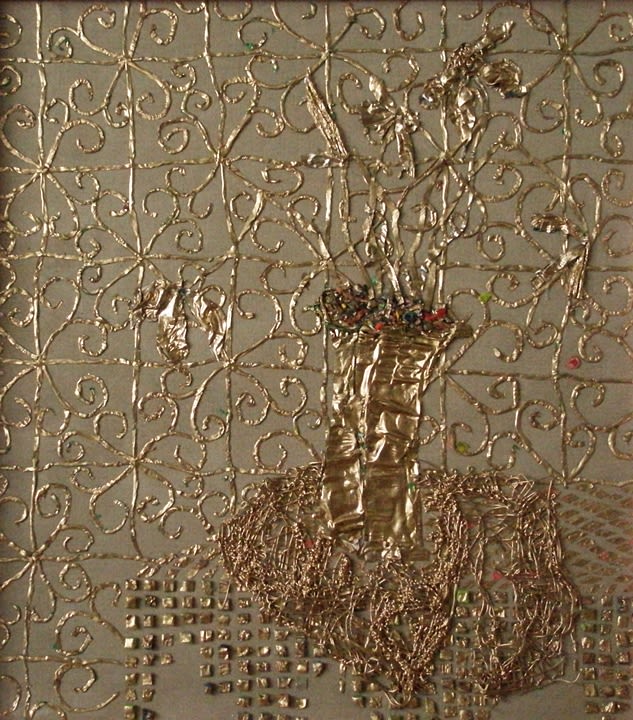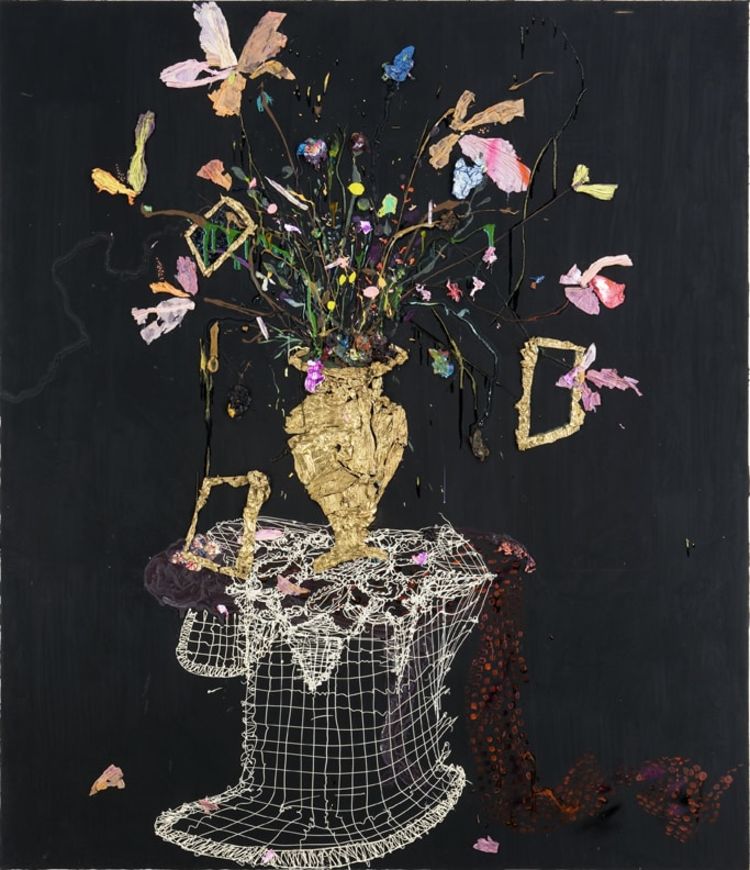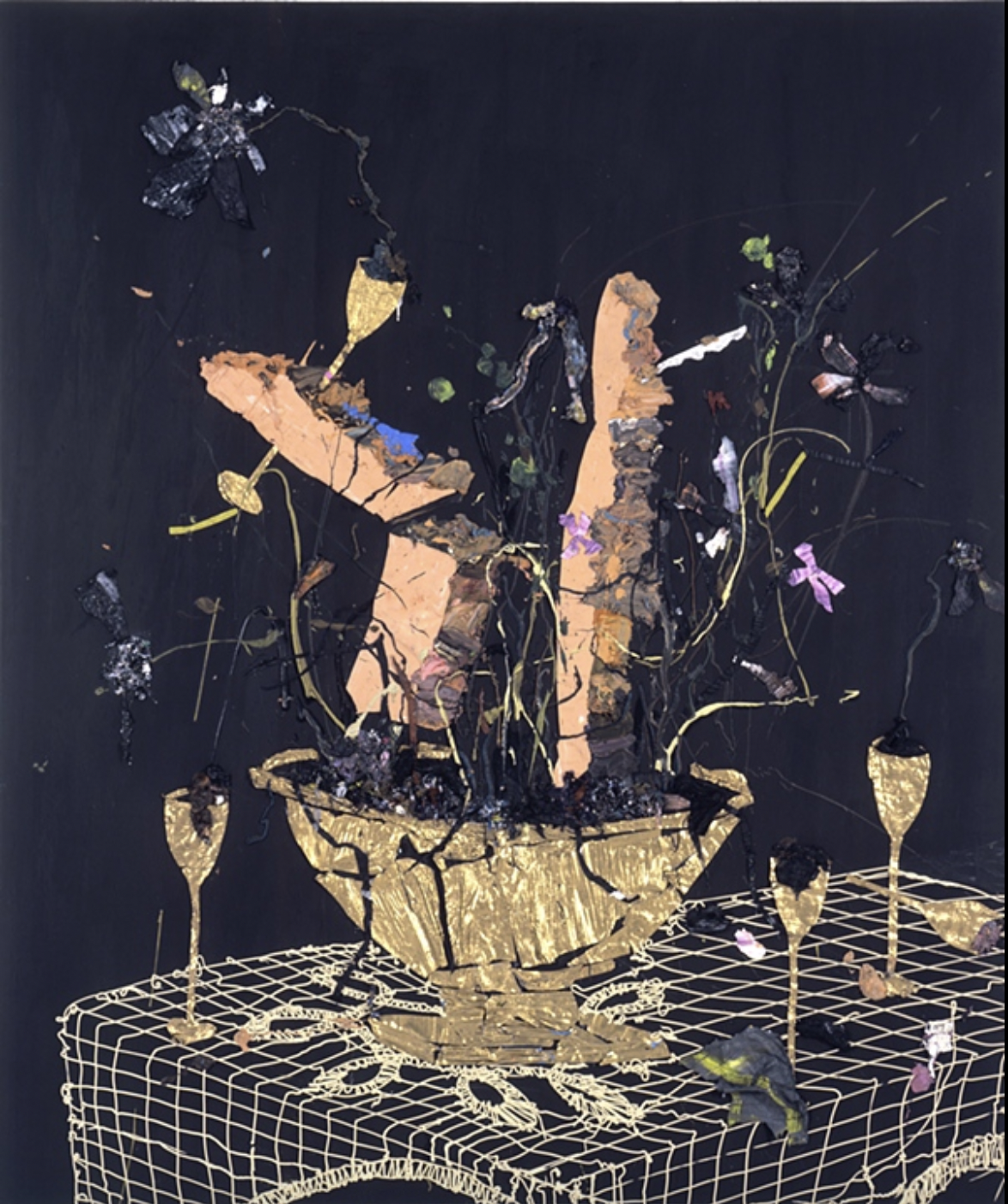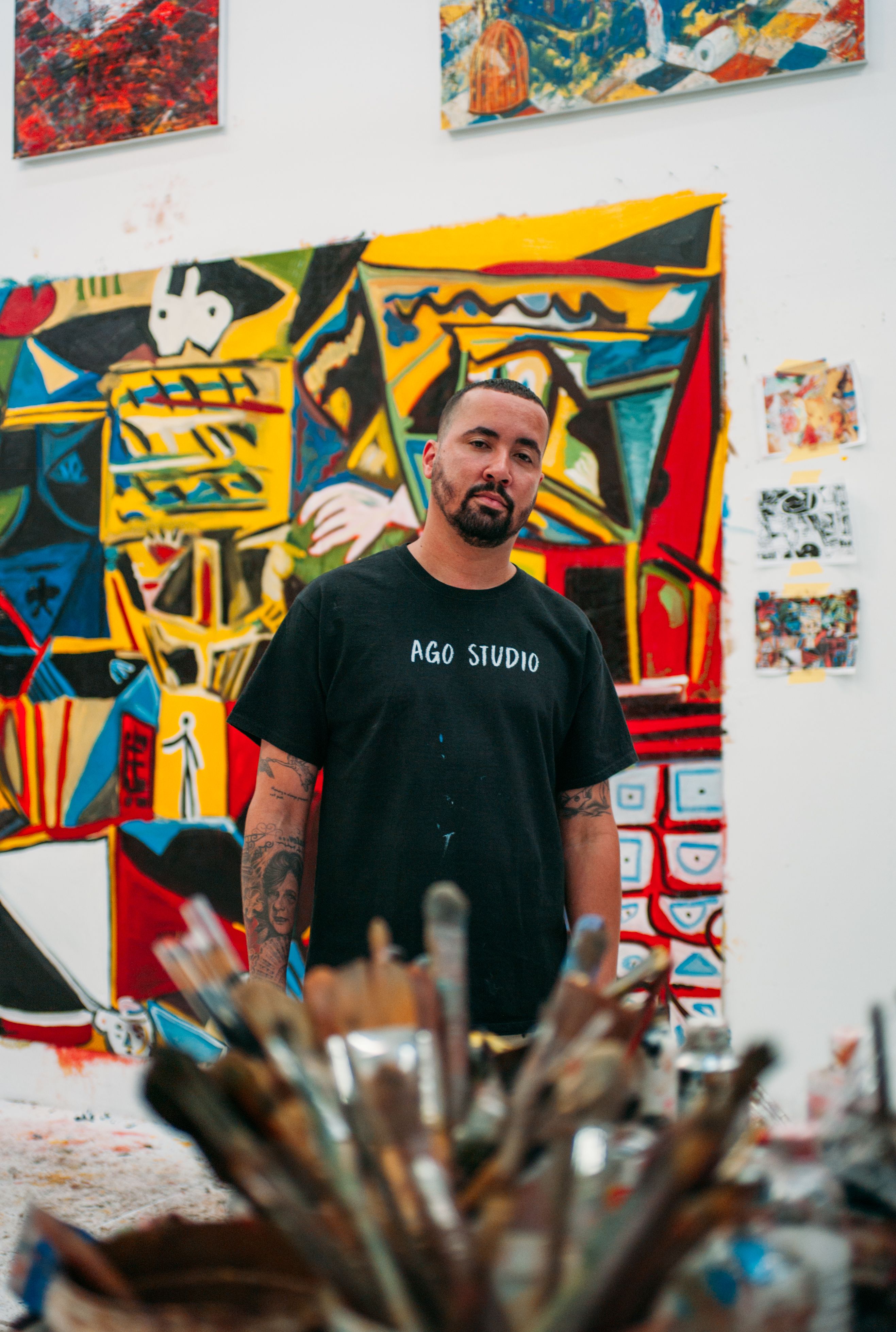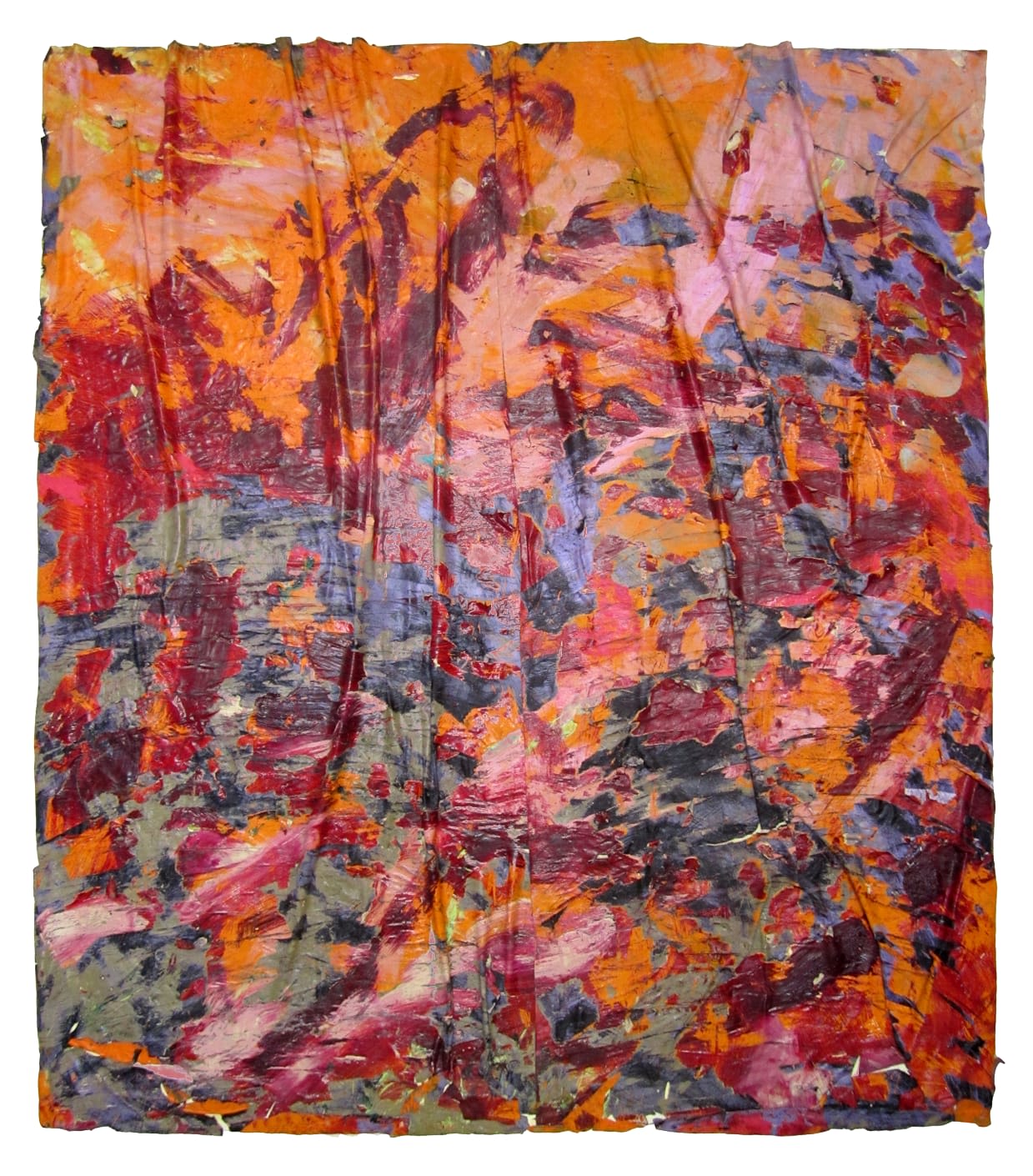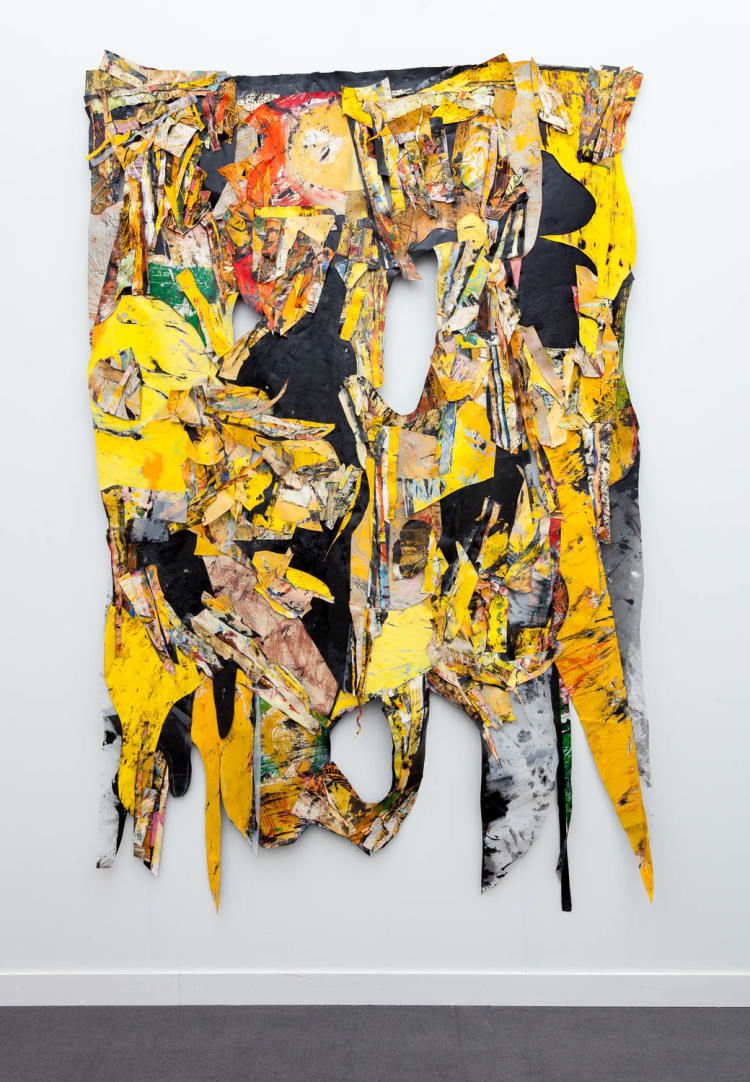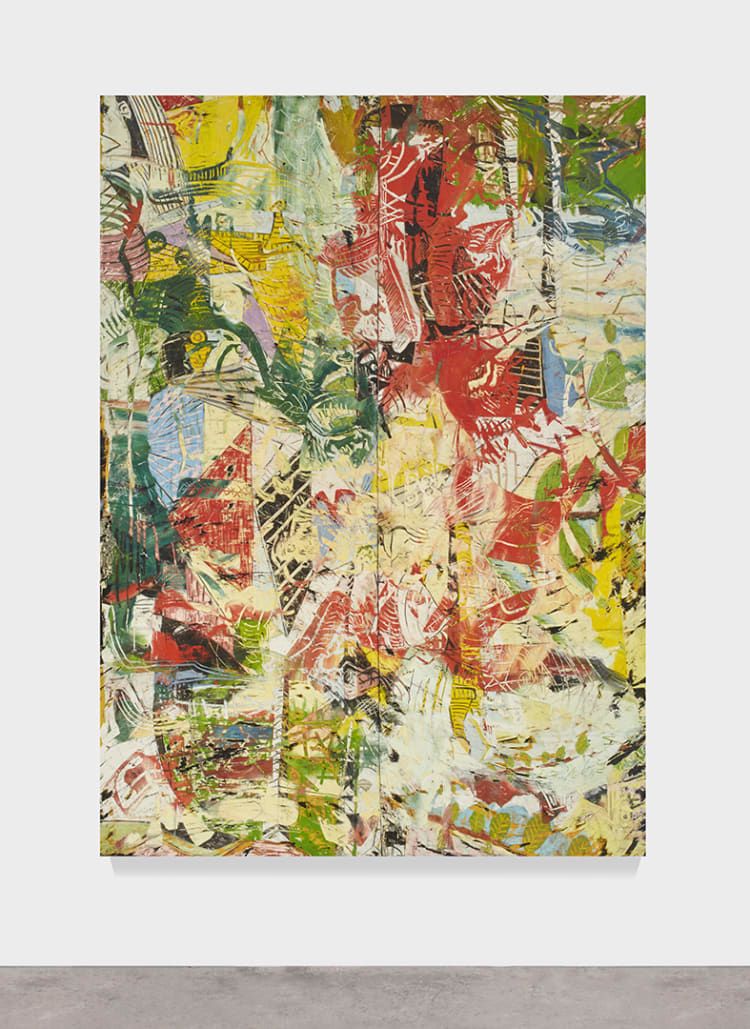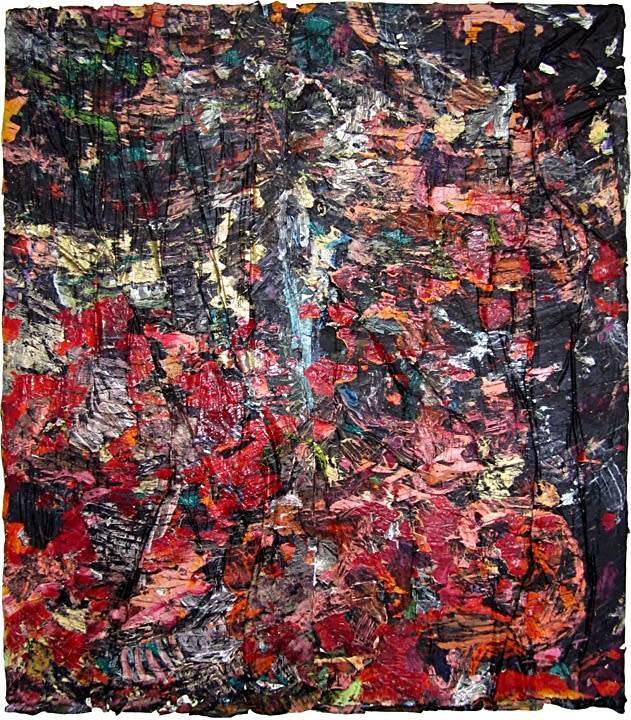Angel
Otero
Art is ... bold.
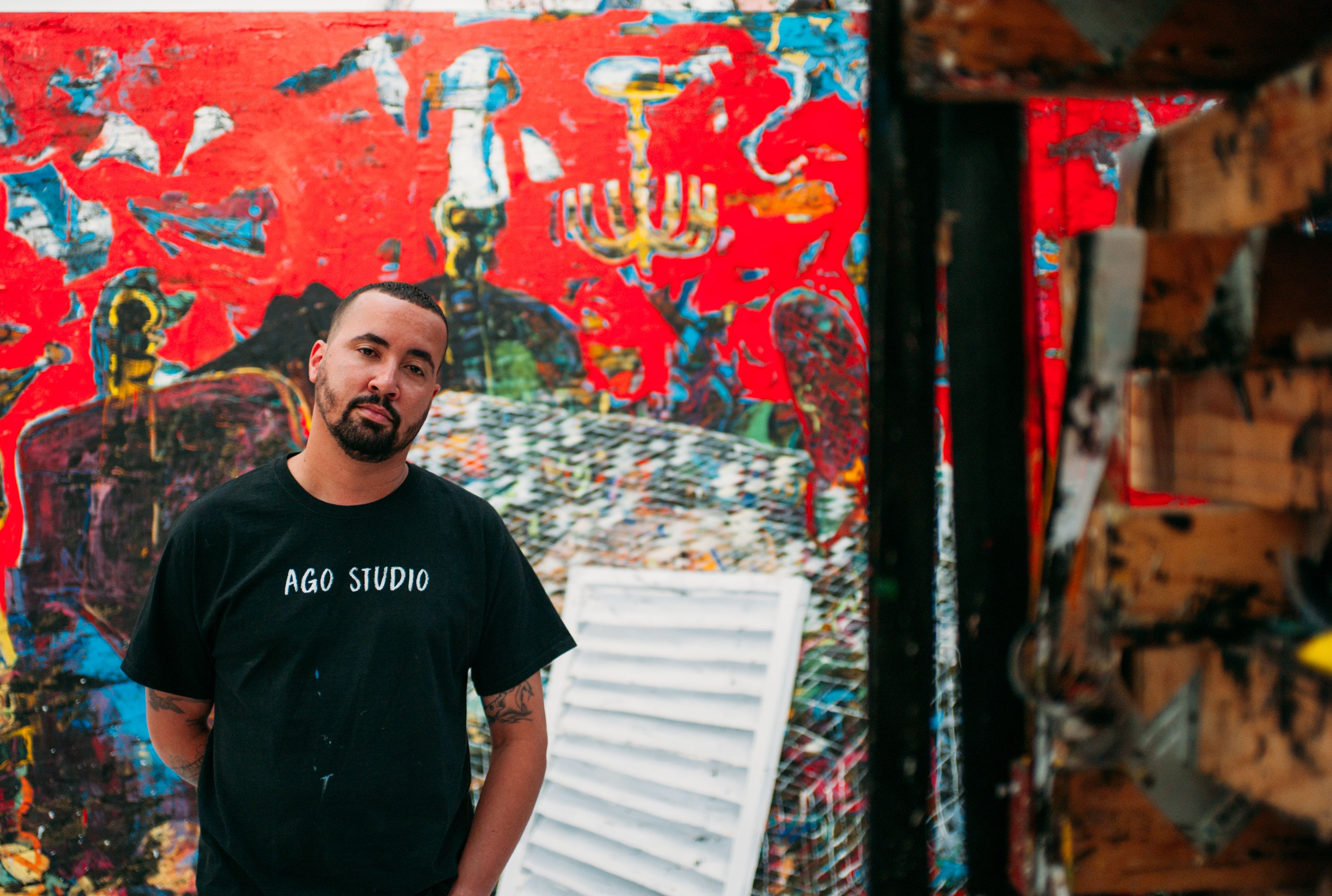
by J. Howard Rosier (MFA 2018)
Portraits by Greg Stephen Reigh (BFA 2013)
“Painter” is the description that Angel Otero (BFA 2007, MFA 2009) identifies with most, but using that title has the unintended effect of singling him out. The artist’s compositions made of dried oil paint smash together colors, textures, and focal points—almost daring viewers to discern a hierarchy. Is it the canvas, the dried paint, or the elements painted over both that give his pieces such a kinetic aura? His sculptures reward careful viewing for their textures and off-kilter sense of motion, while the playful dimensions and negative space in his still lifes render his creations virtually unrecognizable from much of what constitutes the Old Master genre.
Though Otero has exhibited at museums like the Museum of Contemporary Art Chicago, is featured in the permanent collection at the Guggenheim, and has earned the attention of the New York Times, when it comes to his accolades, he’s both humble and occasionally exasperated by the art world’s insistence on categorizing creators. But Otero’s work–with its bold, colorful, distinct point of view–speaks for itself. Both experimental and confident, his style often defies definition. His paintings jut from the wall like sculptures; his sculptures spread out like spilled paint. When he discusses the art world journey that brought him from Puerto Rico to the School of the Art Institute of Chicago to New York City and beyond, his work always centers the conversation.
“I always have tried to be, in a sort of way, biographical,” Otero says. His comments infuse a sense of inquisition into profoundly expressive pieces such as Sunday Morning (2009), The Golden Vase (2009), and Leftover Toast (2010). “At the same time, I always have my hand [held out] to art history or painting history, and how I can keep that dialogue.” The latter composition—baguette-like pieces of bread crumbling in a bowl overrun by wilting flowers, laid on a table netted with a loosely knit tablecloth—was sparked by revisiting the dining table at his grandmother’s house. Rather than a straight rendering of what’s in front of him, “still life,” for Otero, is the physical manifestation of actively remembering. The image is inspired by, not wedded to, events.
“I like to play this sort of conceptual game,” Otero says. “When you think about the words ‘still life’ in a metaphorical way, and then in relation to the content that I'm using, that's where the word ‘leftover’ comes from. I tried to clash the context from something very academic to something way more untraditional.”
His interest in unorthodox materials—those oil paint skins for starters, but also resin, caulk, tar, and linen—comes from a place of challenging himself, both existentially and skills-wise. “It's this sort of interesting way of self-exploring,” he says. “I think that's stayed with me even now. ”
In formal education, Otero encountered the expectation that he would specialize in a certain art form—definitions that he referred to as cages. “You're a painter; you're a ceramist or sculptor,” Otero says. “And it was very confusing to me because I didn't know where I should spend my interest, and what really fit my interests.”
Angel Otero, Sunday Morning, silicone and oil (collaged) on linen, 36" x 40", 2009
Angel Otero, Sunday Morning, silicone and oil (collaged) on linen, 36" x 40", 2009
Angel Otero, The Golden Vase, oil, spray paint, and silicone on canvas, 84" x 72", 2009
Angel Otero, The Golden Vase, oil, spray paint, and silicone on canvas, 84" x 72", 2009
Angel Otero, Leftover Toast, oil skins, silicone, and oil paint on canvas, 2" x 60" x 2.5", 2010
Angel Otero, Leftover Toast, oil skins, silicone, and oil paint on canvas, 2" x 60" x 2.5", 2010
“You're a painter; you're a ceramist or sculptor. And it was very confusing to me because I didn't know where I should spend my interest, and what really fit my interests.”
One formative experience was a trip to the Museo de Arte de Ponce with his father in Puerto Rico, when Otero was 11 years old. (The artist was born on the island in 1981.) Otero wandered around the museum and stumbled across We Have to Dream in Blue (1986), a work by Arnaldo Roche Rabell (MFA 1984). “The thickness of the painting stood out maybe two or three inches,” he says. “I just couldn't understand how this person made this.”
Otero began imitating what he saw from Rabell in that moment, though he discovered later that the artist served as an example in more ways than one. Rabell left his studies at the University of Puerto Rico for Chicago with a couple years of undergrad to finish, just like Otero. And like Rabell, Otero eventually received his MFA from the School of the Art Institute of Chicago (SAIC).
Feeling familial pressure to make money, Otero dropped out of the University of Puerto Rico. A professor from the university, who he’d never taken a class with, kept running into his paintings around the island. Like Rabell, he was also an alum of SAIC. “He wrote a letter [to SAIC faculty] saying like, ‘Hey, there's a student—oh, my God—I think you guys should approach him to see his portfolio.’” A recently launched scholarship at the School sought to expand its programs with students from different countries and backgrounds, and Puerto Rico was on its outreach list. “And they were like, ‘Hey, we're gonna be in Puerto Rico. We would love to meet you in person, and bring your portfolio,’” Otero says. Not accustomed to binders with scaled images, or works rendered digitally on laptops, he brought his actual paintings on a pickup truck for faculty to see. “And right there, I got an interview and they gave me a scholarship. So I ended up making the jump to Chicago [in 2004].”
Angel Otero, Everything and Nothing, collaged oil paint skins on canvas, 2011
Angel Otero, Everything and Nothing, collaged oil paint skins on canvas, 2011
“I was playing with the language of painting, but from a sculptural stance. And that jumped to a sort of confidence in me, exploring materials to construct my work with the sense of taking this thing that has its own kind of significance. ”
When Otero began completing his BFA, he quickly realized how much he didn’t know, and hustled independently to try and catch up on contemporary perspectives. The School provided him a diverse environment, with access to all the materials and disciplines he could ask for—“from the sculpture department to the woodshop… I can use the sound studio, and I can jump into painting, and I can go do ceramics. At the same time, having all these great conversations with other students.”
After he completed his BFA in 2007, SAIC offered Otero a scholarship to pursue his graduate studies. “[As a Master’s student], you were stepping into some deeper conversations in a bit of a competitive environment,” he recalls, which ratcheted up the pressure for him to conceptualize his art.
“I used the idea of the personal and memories from back home as a two-part church to kind of jump into making work,” Otero says. Being additive—feeling out what materials felt appropriate based on what was on his mind—allowed Otero to circumvent self-pigeonholing as a painter while relying on its logic, compositionally, as his home base.
“I was playing with the language of painting, but from a sculptural stance,” he says. “And that jumped to a sort of confidence in me, exploring materials to construct my work with the sense of taking this thing that has its own kind of significance. How do I use it as a trampoline to explore my past, my present, future, our history, all these different things? And I guess that's where I've been standing since.”
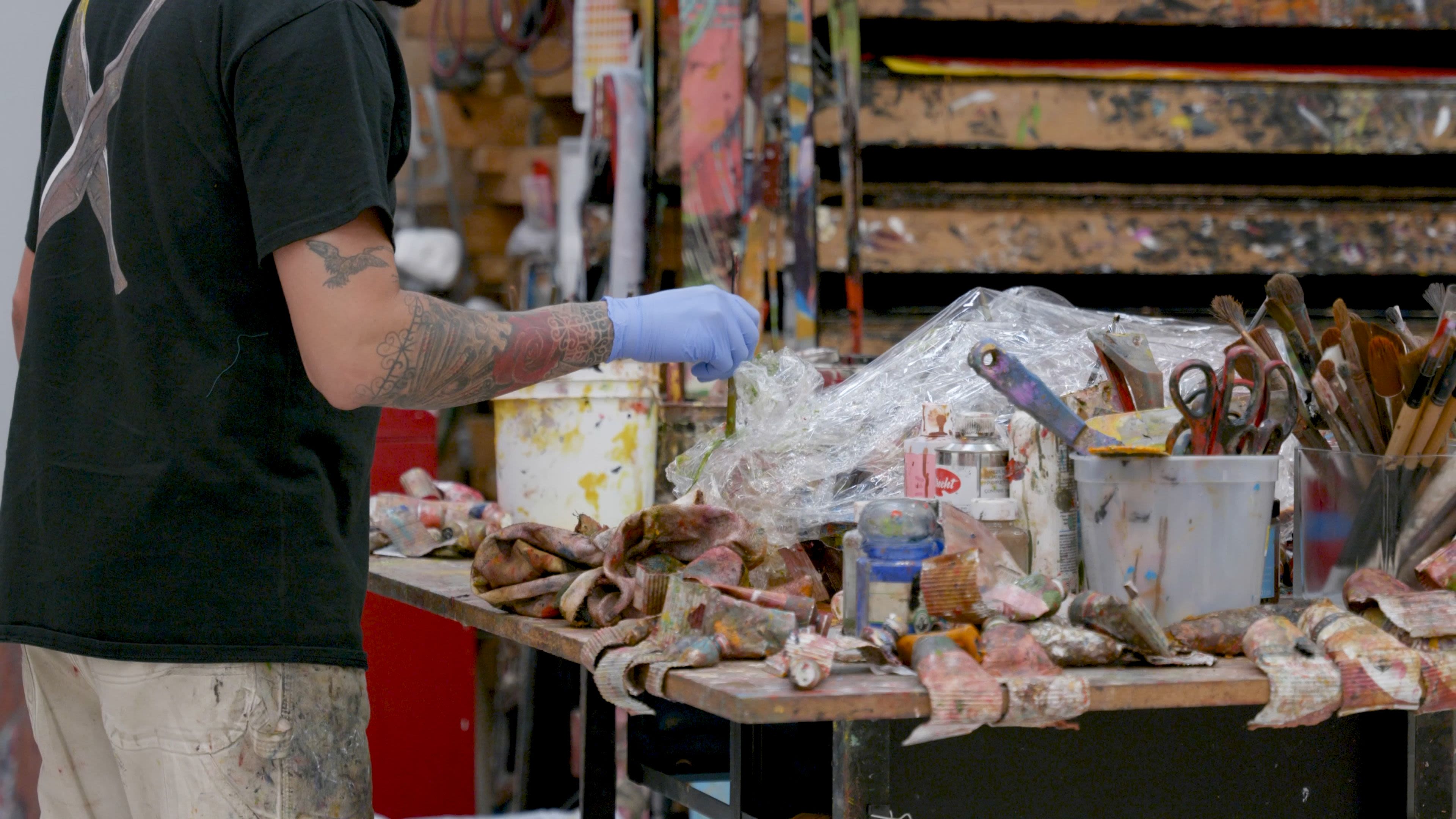
Angel Otero, Spitting Sun, oil skins on fabric, 2018
Angel Otero, Spitting Sun, oil skins on fabric, 2018
Angel Otero, Mellow Yellow Feel, oil paint and fabric collaged on canvas, 2017
Angel Otero, Mellow Yellow Feel, oil paint and fabric collaged on canvas, 2017
Angel Otero, The Dangerous Ability to Fascinate Other People, collaged oil skins on canvas, 2011
Angel Otero, The Dangerous Ability to Fascinate Other People, collaged oil skins on canvas, 2011
Professors like Jim Lutz and John Roselle helped Otero get a handle on different materials, while Candida Alvarez walked him through an understanding of painting as an artform while relaying her experience with the art world ecosystem of galleries and museums. Other influences included Michelle Grabner, who sharpened his critical perspective. Upon completing his MFA in 2009, Otero’s paintings, Equisito (2008) and Untitled (2009), were selected for the Museum of Contemporary Art Chicago’s Constellation exhibition, which was billed as featuring “work by approximately 75 of the most important artists of the last 60 years.” His selection by the curator, Julie Rodrigues Widholm (MA 1999), over older, established artists, was controversial.
“I was excited, but I didn't feel very comfortable making others feel uncomfortable,” Otero says. The early success also forced him to be reactive in his career—playing by the art world’s rules instead of his own.
“It’s a bit of a jungle,” he says. “You need to have a lot of confidence and you need to be strong in order to navigate it as smoothly as possible and not let it affect you as much. Those couple of punches have really helped me kind of now walk with more confidence.”
Otero is represented by the blue-chip gallery Hauser & Wirth in New York and is currently working toward his first solo exhibition with the gallery. The forthcoming pieces are a departure: they are representational and push his forms closer toward abstraction. Some are made with oil skins, some are painted directly onto canvas, and some are a collage of mixed media—paints, oil skins, and even other objects.
A bystander coming across the gallery and seeing work as thrilling as The Dangerous Ability to Fascinate Other People (2011)—a collage of oil paint skins on canvas that ripples out colors and textures like a confetti bomb thrown into a wishing well—might be sent on a different course entirely. Like Otero’s discovery of Arnaldo Roche Rabell 30 years ago, the viewer might be so enthralled that they begin building their creative life around it, only to discover that their similarities were methods and not models, and that the pathways they were acting out weren’t stages, but bridges. ■
Check out Angel Otero's work at the SAIC Virtual Art Auction from November 1-14 on Artsy.net.
Browse and buy work from Angel and more than 90 established contemporary artists to support student scholarships.

